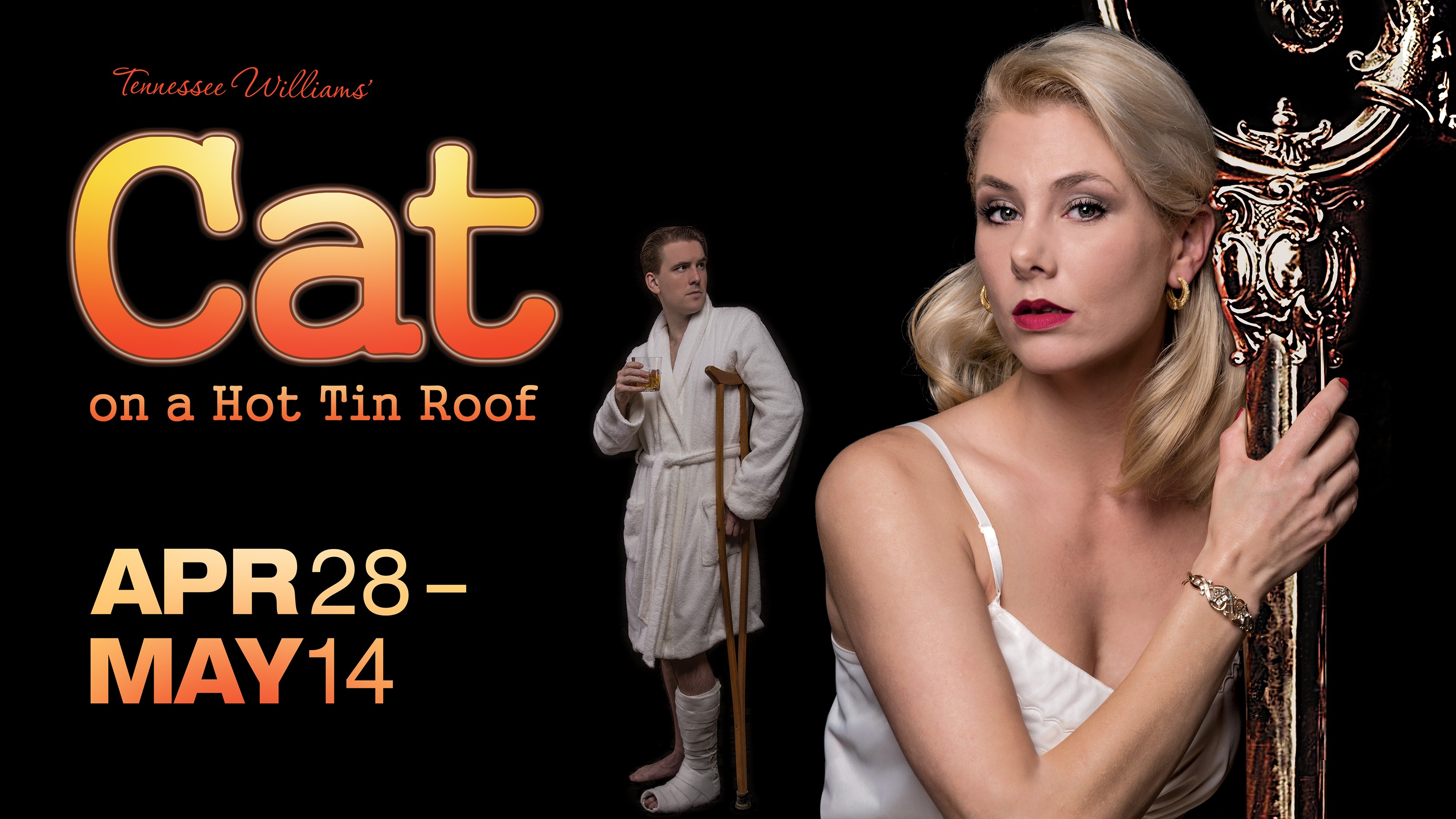
It’s not uncommon for a director to cut servants from Cat on a Hot Tin Roof. They are peripheral characters with no role in the play’s central action. It’s understandable too — In 2017, nobody wants to ask a gifted African-American performer to play a menial who does little more than wheel a birthday cake around on stage, stock the bar, and stand respectfully in the background. But what’s achieved by minimizing disagreeable elements woven into the culture of an historical work? Particularly in a piece of theater deliberately built like music, with so much attention devoted to grace notes, and non-essential dialogue?
We’re not talking about “Servant #1 and Servant #2” characters either. These theatrical phantoms have names: Daisy, Brightie, and Small. Getting rid of them doesn’t affect core conflict, but it erases silent witnesses to the Pollitt family’s lies, infighting and unnecessary strife. The servants may also be a proxy for the audience, able to show those of us stationed on the other side of the footlights, how to observe the action. Senior actors in the roles give resonance to Maggie the Cat’s motivating fear of being old without money. The servants’ quiet efficiency frames the family’s dysfunction and casual racism — something one anticipates in the house of a “Mississippi redneck,” turned multimillionaire in the mid-20th-century. They’ve been cut entirely form Theatre Memphis’ production of Cat. (As has the expression “Mississippi Redneck”— unless I missed it). Through edition selection or careful cutting, language at the intersections of race, and class (and even sex) has been minimized and softened. I’m not here to scold or applaud that. I’m only here to ask what it means when we adjust for the racial insensitivity of historic fiction by eliminating all the black people?
Before the usual assumptions are made, I’m not accusing anybody of being a bad person, or of doing something wrong. I am accusing Theatre Memphis of being a successful East Memphis arts institution with only good intentions — and all the systemic issues that go hand-in-hand with being a successful East Memphis arts institution with only good intentions. In its near-Century history only two African-American-themed plays have been presented on its main stage, and black directors have been few and far between. A strong recent production of Rasheeda Speaking on the NextStage, with its white author, white director, and 3/1 white cast, highlights the trend instead of testing the rule. Success and best intentions notwithstanding, this isn’t a great track record.
One would think in the majority community might be better served by the city’s namesake company. But that’s never been the case, and maybe it never can be given the city’s history of segregated urban planning, crap transit system, and the gatekeeper nature of contemporary arts development and funding. (Read the Q&A connected to this story for background). Besides, though more opportunities may exist, it’s not like any of Memphis’ other theatrical arts institutions are that much better.
When The Hattiloo Theatre came on line as a Memphis institution it immediately filled a need. Though still limited, Memphis’ black theater, and theater-going communities now have a year-round place to experience work relevant to black culture. This good development resulted in a pair of unfortunate externalities. Increasingly the Hattiloo evidences the kinds of issues that go hand in hand with monopoly growth. Meanwhile, the city’s other playhouses — consciously or un — seem to feel even less obligated to produce a consistent body of work relevant to the city’s dominant culture. Not to put too fine a point on it, this has to change. That means companies inclined toward traditional content need to identify opportunities for non-traditional casting. Cat on a Hot Tin Roof was an opportunity for Theatre Memphis to do exactly that.
The Williams estate can be prickly about changes, but not so long ago Broadway audiences were treated to a Pollitt family comprised of James Earl Jones, Terrence Howard, Anika Noni Rose, and Phylicia Rashad. That precedent makes the near complete erasure of race from this tragedy of the American South stand out even more.
This isn’t a dig at Theatre Memphis. It shouldn’t be interpreted as one. Nor is it a dig at a director who staged Cat, more or less, as was originally intended. Nor is it a eulogy for poor Daisy, Brightie, and Small, rubbed out for being inessential and awkward. I suspect most folks won’t miss them a bit — and maybe that’s the point.
But is it progress?